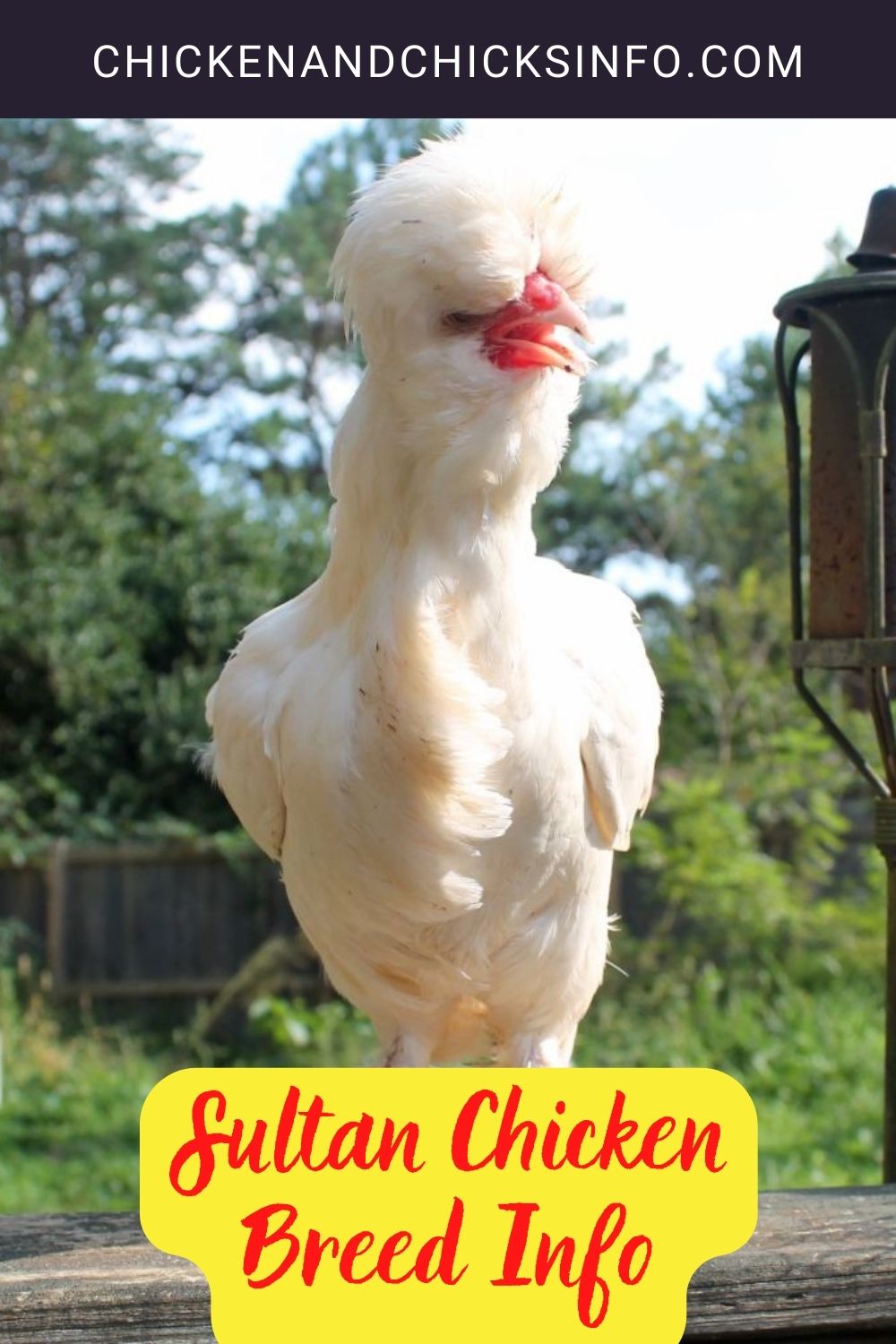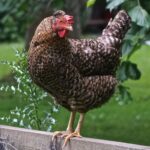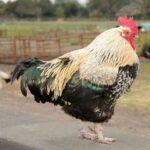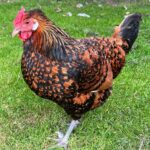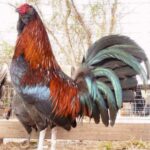Sultan chickens are a rare ornamental breed. They are not generally raised for egg or meat production. Hens only lays around 70 medium-sized white eggs each year. They are not prone to going broody.
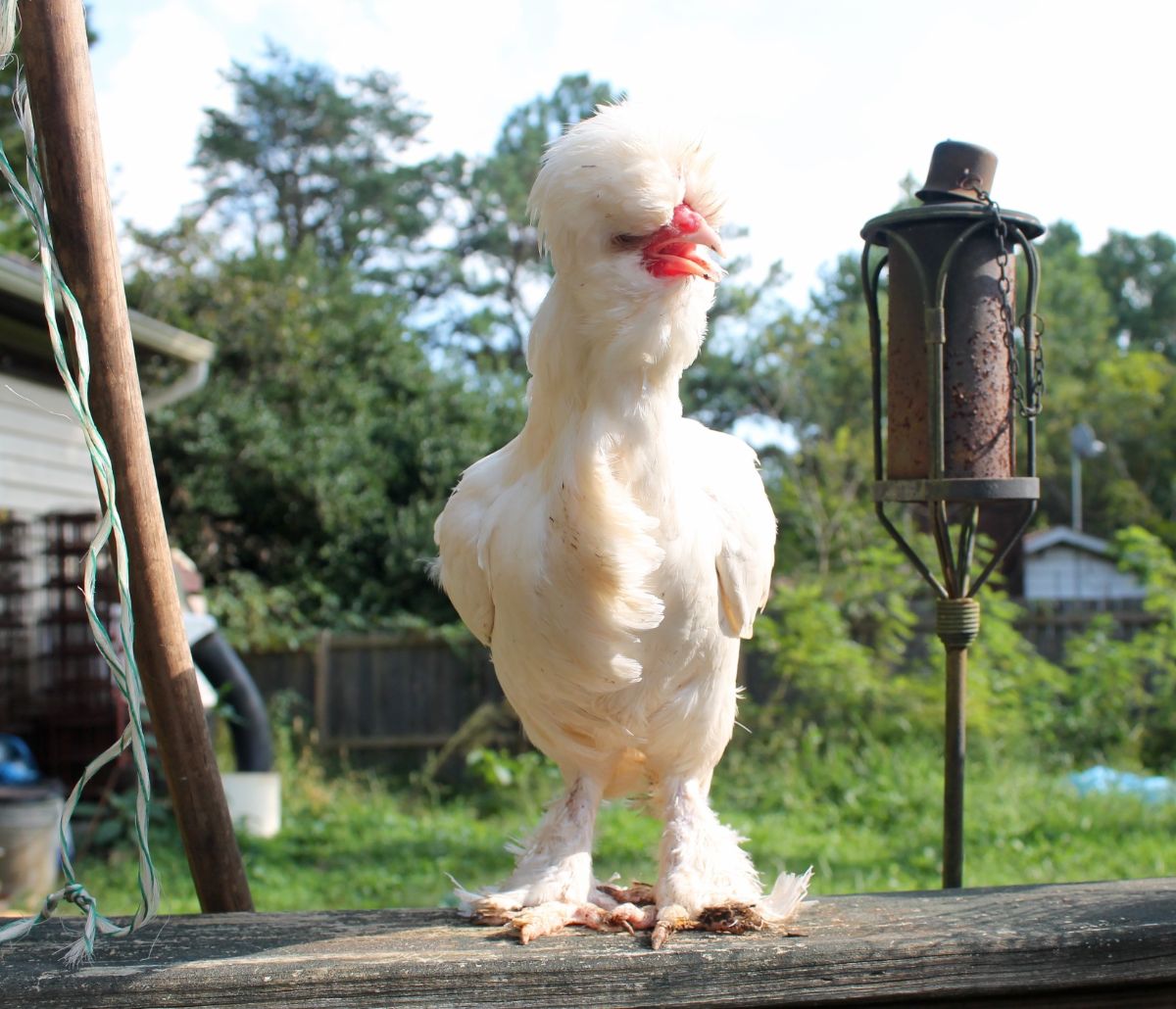
These beautiful, dramatic-looking birds make great pets, as they have a sweet, docile temperament. They are a wonderful choice for beginner and experienced chicken owners alike.
Jump to:
How to Buy Online Sultan Chickens

White Sultan Chicks As low as: $5.50 - Read reviews
Sultan Chicken Breed Quick Info
Sultan Chicken Description
| Sultan Type/Size: | Standard |
| Feather Color: | White |
| Leg Type: | Feathered |
| Leg Color: | Slate Blue |
| Skin Color: | White |
| Sultan Ease of Raising/Keeping: | Moderate |
| Sultan Special Care Needs: | Yes |
| Is the Sultan breed a common, rare, or protected breed of chicken? | Rare, “critical” status |
Sultan Use
| Meat | No |
| Eggs | No |
| Dual Purpose | No |
| Sultan Temperament: | Sweet, docile |
| Sultan Ability/Likelihood to Free Range: | No |
Sultan Egg Production
| Egg Color | White |
| Egg Size | Medium |
| Estimated Number of Eggs Per Year | 70 |
| Likeliness to Brood Eggs/Raise Chicks | Low |
Sultan Meat Production
| Dressed Weight Male | N/A |
| Dressed Weight Female | N/A |
Sultan Climate Tolerance
| Heat | Excellent |
| Cold | Poor |
Sultan Age to Maturity
| Number of Months to Reach Full Size | 6 Months |
| Number of Months to Start Egg Laying | 6 Months |
| Number of Weeks/Months to Reach Meat Harvest Size | N/A |
Sultan Size at Maturity
| Male | 6 lbs |
| Female | 4 lbs |
Origins of Sultan Chicken
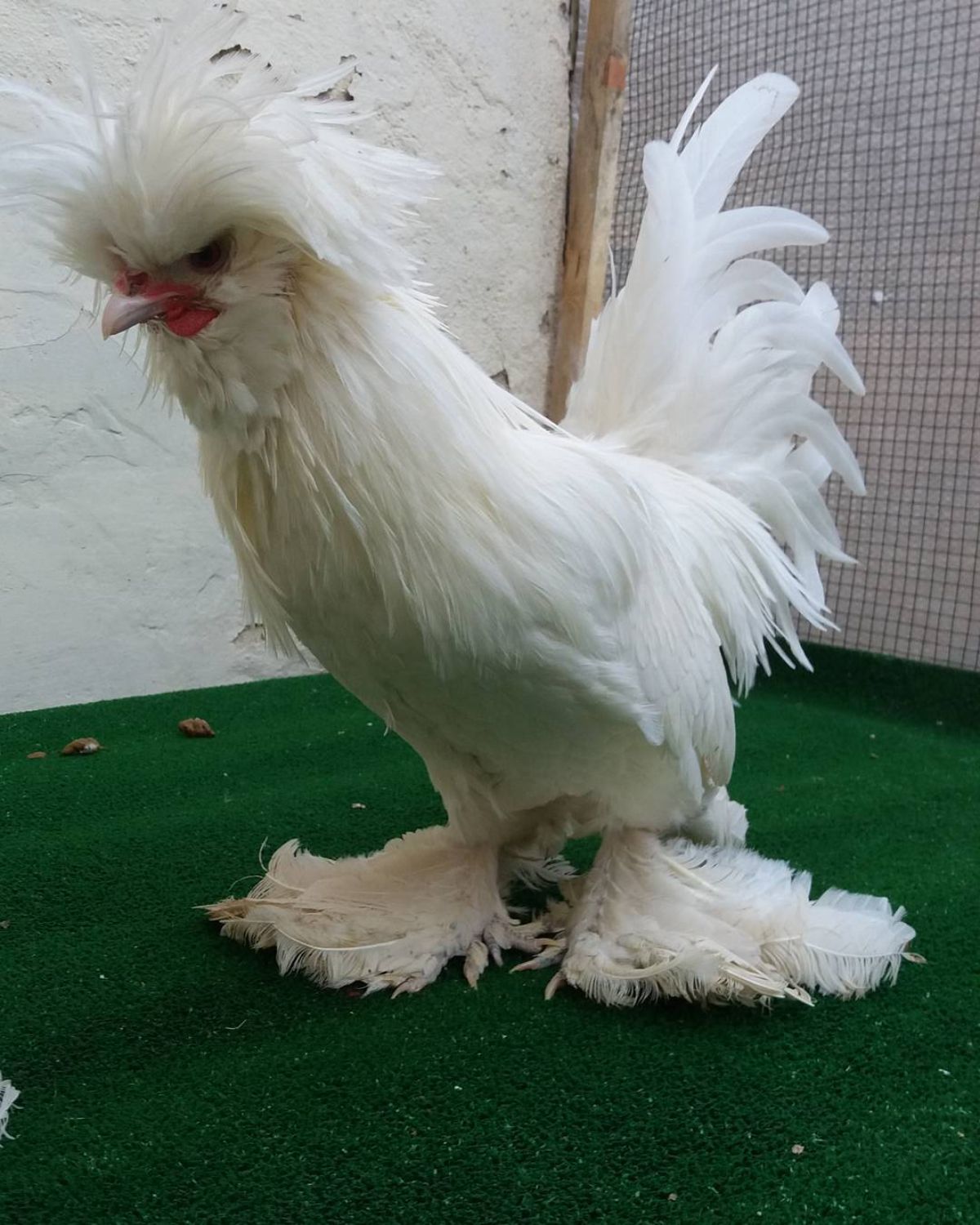
The Sultan chicken is a very old breed that originated in Southeastern Europe. They were favored by the rulers of Turkey. They were imported from Istanbul, Turkey, to England in the 1850s, and soon after that were imported to the United States.
Today, their striking appearance makes them a popular ornamental breed in the United States and around the world.
Some Things to Know About Sultan Chicken
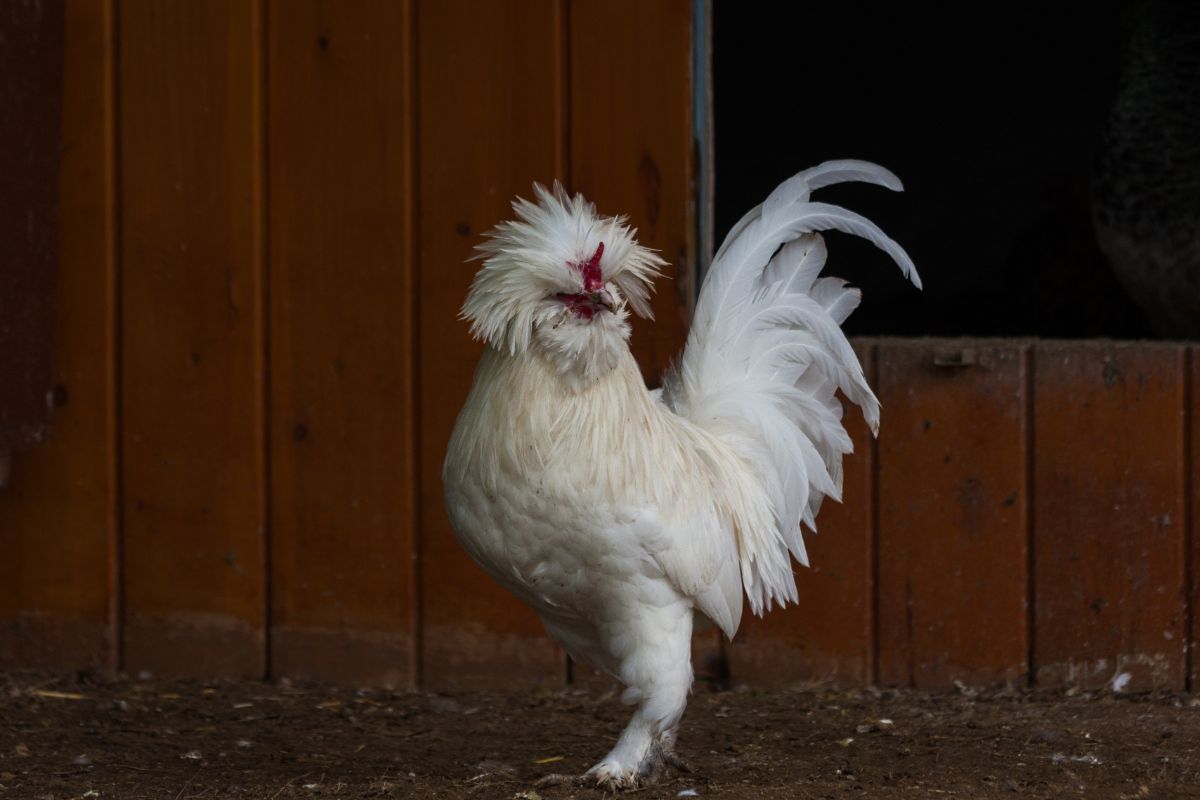
This breed has a unique appearance that fits its royal name. You’ll be able to recognize them by the fluffy crest of feathers on their head, as well as their muff and beard. They also sport vulture hocks, feathered legs and feet, and a fifth toe.
Their plumage is all-white with a bright red “V”-shaped comb and wattles. Roosters have a larger crest and tail than hens do.
How Easy is it to Keep Sultan Chickens?
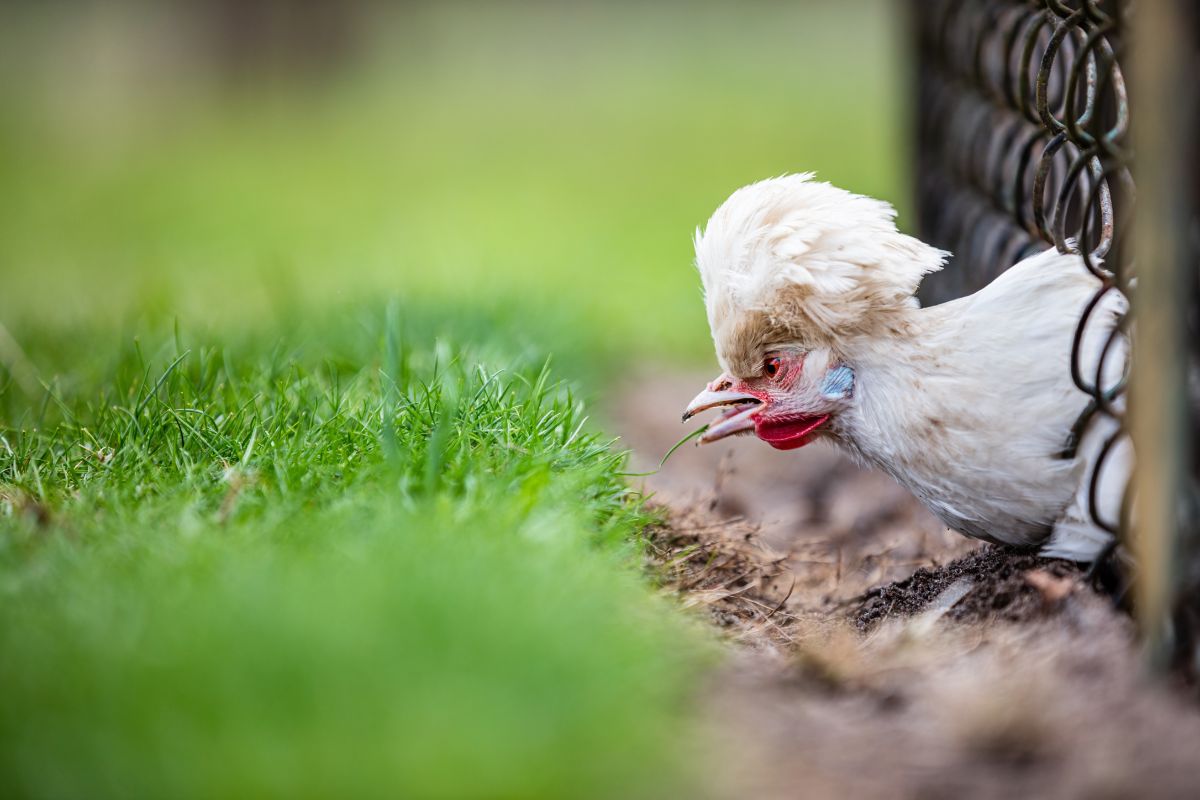
The Sultan chicken breed is an ideal pet and shows birds. These chickens are sweet, friendly, and docile, making them ideal for families with children and beginning chicken owners. They make great pets but are not reliable for egg or meat production.
They do well in confinement and are relatively heat-hardy. This is not an ideal free-range bird because of its crests and feathered legs.
They get along well with people and enjoy human interaction, especially if they were raised alongside humans as young chicks.
They can be chatty but not loud, which is good news if you live in an urban or suburban area close to neighbors. When it comes to their diet, Sultans prefer grain and insects rather than vegetables.
Special Care and Considerations for Sultan Chickens
Sultans can be susceptible to predators because their crest feathers can cover part of their vision. You can trim their crests to help them see better. However, they should not be allowed to free range because of this.
Their crests also mean they are not cold hardy, as they can get wet and freeze, causing frostbite. It is best to keep Sultan chickens indoors in a clean, dry coop when it rains or snows.
They can also be bullied by more aggressive breeds, so it is better to keep them with breeds of a similar disposition.
